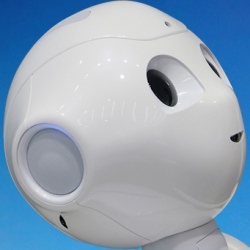
Intel CEO Brian Krzanich said Intel would be focusing on the Internet of Things (IoT), cloud and 5G as part of the company’s new “virtuous cycle of growth”. One of the key engineers of Krzanich’s plan is former Qualcomm executive Venkata “Murthy” Renduchintala.
Intel has five core beliefs they hold to be undeniably true for the future.
The cloud is the most important trend shaping the future of the smart, connected world; and thus Intel’s future.
The many “things” that make up the PC Client business and the Internet of Things are made much more valuable by their connection to the cloud.
Memory and programmable solutions such as FPGAs will deliver entirely new classes of products for the data center and the Internet of Things.
5G will become the key technology for access to the cloud and as we move toward an always-connected world.
Moore’s Law will continue to progress and Intel will continue to lead in delivering its true economic impact.
The term “Internet of Things” tends to be ambiguous, so it’s important to define it and then identify what segments Intel will drive. “Things” range from PCs to what we now call the Internet of Things. The Internet of Things encompasses all smart devices – every device, sensor, console and any other client device – that are connected to the cloud.
The key phrase here is “connected to the cloud.” It means that everything that a “thing” does can be captured as a piece of data, measured real-time, and is accessible from anywhere. And the biggest opportunity in the Internet of Things is that it encompasses just about everything in our lives today, it’s ubiquitous.
For most areas of industry and retail, from our shoes and clothes to our homes and cars, the Internet of Things is transforming everything and every experience. At Intel, we will focus on autonomous vehicles, industrial and retail as our primary growth drivers of the Internet of Things. Similarly, we view our core Client business of PCs and mobile as among the many variations of connected things, which is driving our strategy of differentiation and segmentation in the Internet of Things business.
Intel has bought into the prediction that there will be more than 50 billion connected devices that make up the IoT by 2020, and each of those devices will need a way to communicate. Intel believes that 5G networks are best suited for that job, and that’s the direction Intel is headed in, Renduchintala said.
Barrons had an article indicating that the Internet of Things in its current form is a dead end.
The Internet is a means to connect lots of disparate computer networks so that they can communicate. It brings things together, which is its great power. The IoT, in its present form, is a jumble of electronic devices that don’t really connect anything. They’re just dead ends.
A larger effort is needed to get a lot more Internet of Things devices to be created and for them to be openly connected.
